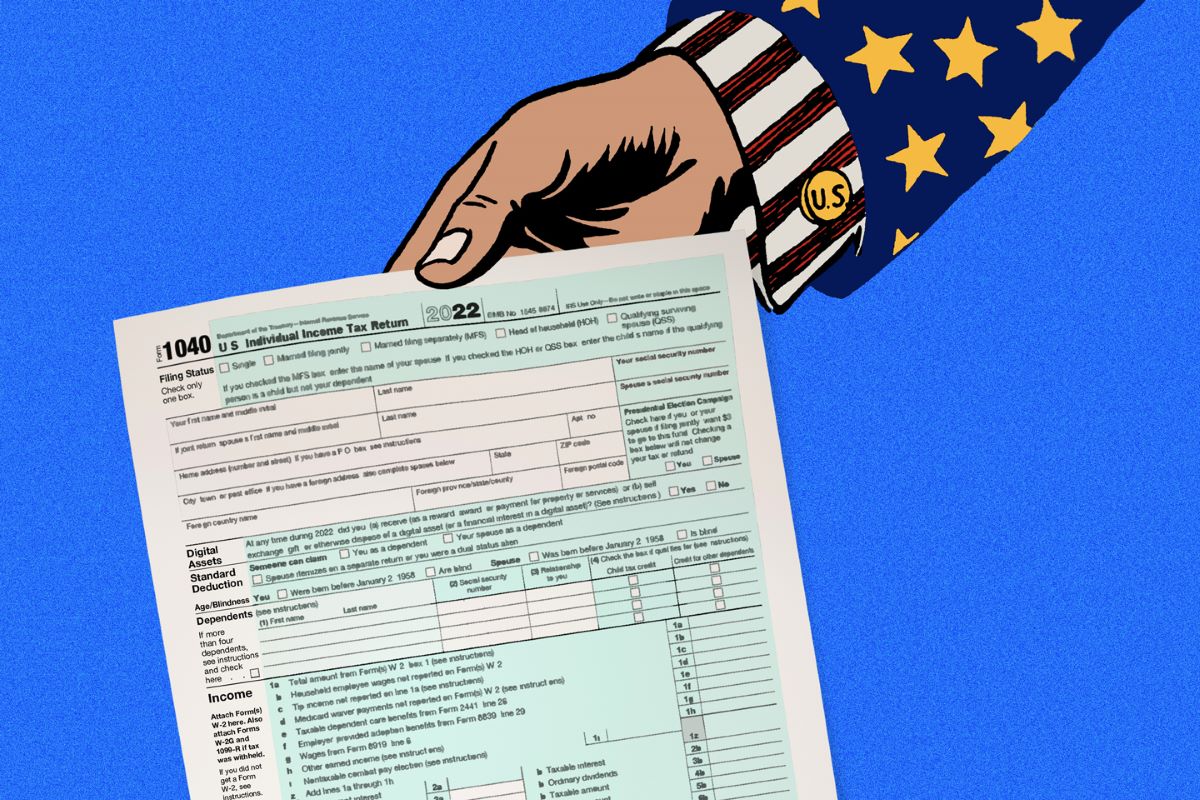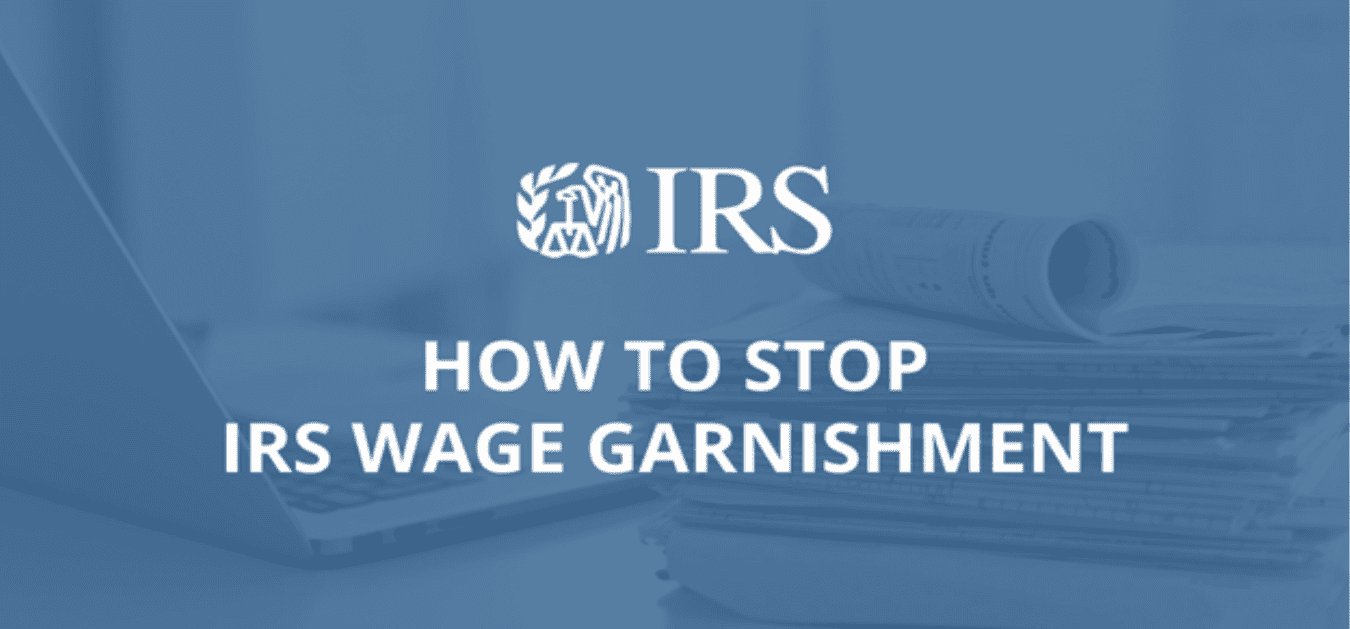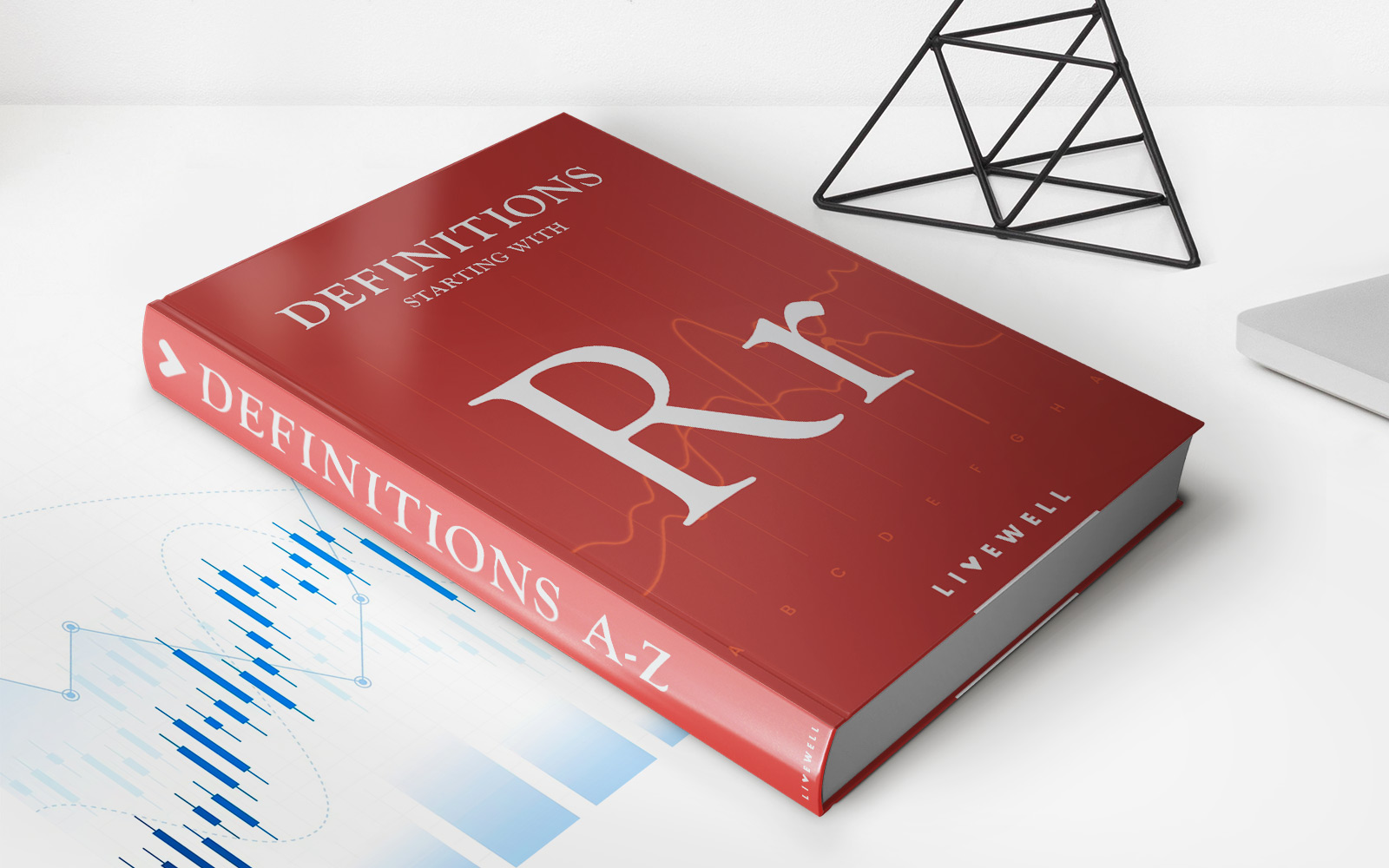

Finance
When Does The IRS Garnish Wages?
Published: October 31, 2023
Find out when the IRS can garnish your wages and how to protect your finances. Understand the implications and take proactive steps to avoid wage garnishment.
(Many of the links in this article redirect to a specific reviewed product. Your purchase of these products through affiliate links helps to generate commission for LiveWell, at no extra cost. Learn more)
Table of Contents
Introduction
Dealing with tax debt can be a daunting and stressful experience. One of the most severe actions the Internal Revenue Service (IRS) can take to collect unpaid taxes is to garnish wages. Wage garnishment is a legal process in which the IRS can take a portion of a taxpayer’s paycheck directly from their employer to satisfy outstanding tax liabilities.
This article will provide an overview of IRS wage garnishment, including the criteria for when the IRS can garnish wages, the notification process, limits on wage garnishment, and options for stopping or releasing wage garnishment. It is essential to have a comprehensive understanding of these factors to navigate the complex world of tax debt and safeguard your financial well-being.
With this knowledge, you’ll be better equipped to take appropriate action and seek professional assistance, if necessary, to resolve your tax debt and prevent or release wage garnishment. Let’s delve deeper into the details of IRS wage garnishment and the steps you can take to protect your hard-earned wages.
Overview of IRS Wage Garnishment
IRS wage garnishment is a legal process used by the IRS to collect unpaid taxes from individuals who have failed to address their outstanding tax liabilities. When the IRS determines that a taxpayer has not made sufficient efforts to resolve their tax debt, they have the authority to initiate wage garnishment as a means of compelling payment. This process allows the IRS to legally seize a portion of a taxpayer’s wages directly from their employer, diverting the funds to satisfy the outstanding tax debt.
Wage garnishment is a serious action that can have a significant impact on a taxpayer’s financial situation. The IRS has the power to garnish up to 25% of a taxpayer’s disposable income, leaving them with a reduced paycheck to cover their living expenses. Additionally, wage garnishment can cause embarrassment and strain on personal relationships, as the employer becomes aware of the taxpayer’s tax troubles.
It is important to note that before initiating wage garnishment, the IRS will typically attempt to resolve the tax debt through other means, such as sending notices and demanding payment. Wage garnishment is typically considered a last resort when other collection efforts have been unsuccessful.
It is crucial for individuals facing tax debt to understand that the IRS must follow specific guidelines and procedures when implementing wage garnishment. They cannot simply garnish wages without due process and providing proper notification to the taxpayer. Understanding the process, criteria, and limitations of wage garnishment can help individuals take appropriate action to resolve their tax debt and avoid or release wage garnishment.
Understanding Tax Debt
Before delving into the details of IRS wage garnishment, it is important to have a clear understanding of tax debt. Tax debt refers to the amount of unpaid taxes that an individual or business owes to the IRS. It can arise from various sources, including income taxes, self-employment taxes, payroll taxes, or penalties and interest on past-due taxes.
When individuals fail to pay their taxes or file their tax returns on time, they can accumulate tax debt. The IRS expects taxpayers to fulfill their tax obligations by paying the amount owed according to the established deadlines. Failure to do so can result in penalties and interest, which can significantly increase the overall tax debt.
It’s crucial to note that tax debt is a legal obligation that should not be taken lightly. Ignoring tax debt or failing to address it can lead to serious consequences, including wage garnishment, bank levies, tax liens, and even legal action by the IRS. Therefore, it is essential for taxpayers to be proactive in addressing their tax debt and working towards a feasible resolution.
When faced with tax debt, individuals may have several options to consider. These can include payment plans, offers in compromise, penalty abatement, or seeking professional help from tax professionals or attorneys who specialize in tax debt resolution. The appropriate course of action will depend on the specific circumstances of the taxpayer, the amount of tax debt owed, and their ability to pay.
Understanding tax debt and the options available to address it is essential for taxpayers to navigate the complex terrain of IRS collections. By taking proactive steps to resolve tax debt, individuals can avoid the severe consequences of wage garnishment and work towards achieving financial stability.
The Collection Process
When taxpayers fail to address their tax debt, the IRS initiates a collection process to pursue payment. This process can be broken down into several stages, each with its own set of actions and deadlines. Understanding the collection process can help individuals navigate the steps involved and make informed decisions to resolve their tax debt.
The collection process begins with the IRS sending a series of notices to the taxpayer to inform them of their outstanding tax debt. These notices outline the amount owed, penalties and interest accrued, and provide a deadline for payment. It is crucial for taxpayers to read and respond to these notices promptly.
If the taxpayer does not respond or make suitable arrangements to address the tax debt, the IRS can escalate the collection efforts. This can include filing a Notice of Federal Tax Lien, which serves as a legal claim on the taxpayer’s property, such as real estate or financial assets. A tax lien can negatively impact the taxpayer’s credit score and make it challenging to obtain loans or credit in the future.
In addition to a tax lien, the IRS can also initiate wage garnishment as a means of collecting the unpaid taxes. As discussed earlier, wage garnishment involves diverting a portion of the taxpayer’s paycheck directly from their employer to satisfy the outstanding tax debt. The IRS can garnish up to 25% of the taxpayer’s disposable income.
If the taxpayer still does not address their tax debt and fails to make arrangements for repayment, the IRS may resort to more aggressive collection actions, such as levying bank accounts or seizing assets. These actions aim to recover the owed tax debt by taking funds directly from the taxpayer’s bank account or selling seized assets.
It is important for taxpayers to understand that the collection process can be halted or modified if they take appropriate action. This can include negotiating a payment plan with the IRS, submitting an offer in compromise to settle the tax debt for a lesser amount, or demonstrating financial hardship to seek relief from collection actions.
By understanding the collection process and the available options, taxpayers can make informed decisions to address their tax debt and prevent or release wage garnishment.
Criteria for IRS Wage Garnishment
The IRS has specific criteria that must be met before they can initiate wage garnishment to collect unpaid taxes. Understanding these criteria can help individuals determine when they may be at risk of facing wage garnishment and take appropriate action to address their tax debt.
One of the key criteria for IRS wage garnishment is the existence of unpaid tax debt. The taxpayer must have a significant amount of outstanding tax liabilities that they have not addressed or resolved. This can include income taxes, self-employment taxes, payroll taxes, or penalties and interest on past-due taxes.
In addition to unpaid tax debt, the IRS must also determine that the taxpayer has not made sufficient efforts to resolve their tax liability. The IRS typically initiates wage garnishment as a last resort when other collection efforts, such as sending notices and demands for payment, have been unsuccessful.
The amount of tax debt owed is another factor that the IRS considers. Generally, the IRS will not pursue wage garnishment for small or minor tax debts. Instead, wage garnishment is typically reserved for taxpayers who owe significant amounts of money and have not made substantial progress in repaying their debt.
The IRS is also required to follow specific legal procedures and guidelines when implementing wage garnishment. This includes providing proper notification to the taxpayer before garnishing their wages. The taxpayer will receive a Notice of Intent to Levy, which informs them of the IRS’s intention to initiate wage garnishment if they do not take appropriate action within a specified timeframe.
It is crucial for taxpayers to review any correspondence received from the IRS carefully and take prompt action to address their tax debt. Ignoring or disregarding these notices can escalate the situation and increase the likelihood of facing wage garnishment.
Understanding the criteria for IRS wage garnishment can help individuals gauge their risk and take appropriate steps to resolve their tax debt. By proactively addressing their tax obligations, individuals can avoid or release wage garnishment and work towards achieving a more stable financial situation.
Notification Process
The IRS is required to provide proper notification to taxpayers before initiating wage garnishment. This notification process ensures that individuals are aware of the IRS’s intention to garnish their wages and provides them with an opportunity to take necessary action to address their tax debt.
The notification process begins with the IRS sending a Notice of Intent to Levy to the taxpayer. This notice informs the taxpayer of the IRS’s intent to initiate wage garnishment if they do not take appropriate action within a specific timeframe. The notice also explains the amount of tax debt owed, including any penalties and interest accrued, and provides instructions on how to resolve the outstanding tax liability.
The taxpayer typically has 30 days from the date of the Notice of Intent to Levy to respond and take action. It is crucial for the taxpayer to carefully review the notice and understand their options. Ignoring or disregarding the notice can result in the IRS proceeding with wage garnishment.
If the taxpayer does not respond within the specified timeframe, the IRS will send a Final Notice of Intent to Levy and a Notice of Your Right to a Hearing. These notices reiterate the IRS’s intent to proceed with wage garnishment and inform the taxpayer of their right to request a Collection Due Process (CDP) hearing before the wage garnishment takes effect.
The CDP hearing provides the taxpayer with an opportunity to present their case and propose a resolution to the tax debt. It allows for a review of the taxpayer’s financial situation and can lead to alternative arrangements, such as a payment plan or an offer in compromise. It is important for the taxpayer to request the CDP hearing within the designated timeframe to prevent wage garnishment.
If the taxpayer does not request a CDP hearing or if the hearing does not result in a resolution, the IRS will proceed with wage garnishment. The IRS will send a Notice of Levy to the taxpayer’s employer, instructing them to withhold a portion of the taxpayer’s wages and remit it directly to the IRS to satisfy the outstanding tax debt.
It is crucial for taxpayers to be proactive in addressing their tax debt and responding to any notices received from the IRS. By understanding the notification process and taking prompt action, individuals can protect themselves from wage garnishment and work towards resolving their tax obligations.
Limits on Wage Garnishment
While the IRS has the authority to garnish wages to collect unpaid taxes, there are limits in place to protect taxpayers from excessive garnishment that could leave them unable to meet their basic living expenses. These limits are designed to ensure that individuals have enough income to support themselves and their families.
Under the Federal Payment Levy Program (FPLP), the IRS can garnish up to 25% of a taxpayer’s disposable income. Disposable income is defined as the amount of earnings remaining after deducting required federal, state, and local taxes, as well as specified deductions for things like Social Security and Medicare.
However, there are additional factors that can further limit the amount that the IRS can garnish from a taxpayer’s wages:
- Minimum Threshold: The IRS cannot garnish wages if the taxpayer’s weekly income is below a certain threshold. This threshold is calculated based on the taxpayer’s filing status and the number of exemptions claimed.
- Financial Hardship: If wage garnishment would result in financial hardship for the taxpayer, they may be eligible for a financial hardship exemption. This can temporarily reduce or suspend the garnishment, allowing the taxpayer some relief to meet their essential needs.
- IRS Allowable Expenses: The IRS considers the taxpayer’s necessary living expenses when determining the amount that can be garnished. This includes expenses such as housing, food, clothing, transportation, and healthcare.
It is crucial for taxpayers to be aware of their rights and the limits on wage garnishment. If the IRS is garnishing wages beyond what is allowed by law or causing undue financial hardship, the taxpayer has the right to contest the garnishment and seek a modification or release.
It’s important to note that while the IRS has specific limits on wage garnishment, state laws may also come into play. Some states have enacted their own laws that further limit wage garnishment by creditors, including the IRS. It’s advisable to check the specific regulations in your state to understand the additional protections that may be available.
By understanding the limits on wage garnishment and knowing their rights, taxpayers can take appropriate action to ensure that their wages are garnished within the allowable limits and that they have enough income to meet their basic needs.
Financial Hardship Exemptions
When facing wage garnishment by the IRS, taxpayers experiencing significant financial hardship may be eligible for a financial hardship exemption. This exemption can provide temporary relief from wage garnishment or reduce the amount that the IRS can garnish, allowing the taxpayer to meet their basic needs during challenging times.
Financial hardship exemptions take into account the taxpayer’s financial situation and their ability to cover essential living expenses. The IRS considers factors such as income, assets, and necessary expenses when determining whether a taxpayer qualifies for a financial hardship exemption.
To apply for a financial hardship exemption, the taxpayer must submit a Collection Information Statement (Form 433-A or Form 433-F) to the IRS. These forms provide detailed information about the taxpayer’s financial status, including income, expenses, assets, and liabilities.
Based on the information provided, the IRS will assess the taxpayer’s financial hardship and determine if they qualify for relief. If approved, the IRS may adjust the wage garnishment amount, temporarily suspend the garnishment, or provide alternative payment options to accommodate the taxpayer’s financial situation.
It’s important to note that financial hardship exemptions are not a permanent solution to tax debt. They provide temporary relief and are typically granted for a specific period of time. During this time, the taxpayer should actively work towards resolving their outstanding tax debt, such as by entering into a payment plan or seeking professional assistance.
Additionally, it is important for taxpayers to be proactive in seeking a financial hardship exemption. They should gather and present accurate and comprehensive financial information to support their case. Failing to provide sufficient documentation or missing the application deadline could result in the denial of the exemption and continued wage garnishment.
If approved for a financial hardship exemption, it is crucial for taxpayers to comply with the terms and conditions set by the IRS. This may include making regular payments as agreed upon or providing updated financial information when requested.
Seeking professional assistance from tax professionals or attorneys who specialize in tax debt resolution can be beneficial when applying for a financial hardship exemption. These professionals can guide taxpayers through the process, ensure that all necessary documentation is provided, and advocate for their best interests.
By pursuing a financial hardship exemption, taxpayers facing wage garnishment can obtain temporary relief and work towards resolving their tax debt in a way that considers their financial situation and ability to meet their basic needs.
How to Stop or Release Wage Garnishment
If you are currently facing wage garnishment by the IRS, it is important to take immediate action to stop or release the garnishment. Here are some steps you can take to address the situation:
- Contact the IRS: Reach out to the IRS to discuss your tax debt and explore potential options for resolution. You can contact the IRS directly or work with a tax professional who can advocate on your behalf. It is crucial to communicate with the IRS and demonstrate your willingness to address the outstanding taxes.
- Negotiate a payment plan: If you cannot afford to pay your tax debt in full, you can propose a payment plan to the IRS. This allows you to make manageable monthly payments towards your tax liability. Once the payment plan is approved, the IRS may release the wage garnishment.
- Submit an offer in compromise: In some cases, you may be eligible to settle your tax debt for less than the full amount through an offer in compromise. This option requires demonstrating that paying the full tax debt would cause financial hardship. If the offer is accepted, the IRS may release the wage garnishment.
- Seek a financial hardship exemption: If you are experiencing significant financial hardship, you can apply for a financial hardship exemption. This exemption can temporarily suspend or reduce the wage garnishment amount, allowing you to cover essential living expenses during difficult times.
- Request a Collection Due Process (CDP) hearing: If you haven’t received a CDP hearing before the wage garnishment was initiated, you may be able to request one. The hearing provides an opportunity to present your case and propose an alternative resolution to the tax debt. This can potentially result in the release of the wage garnishment.
- Seek professional assistance: If you are unsure how to proceed or need guidance throughout the process, it is advisable to seek assistance from tax professionals or attorneys who specialize in tax debt resolution. They can assess your situation, advocate on your behalf, and help you navigate the complex process of stopping or releasing wage garnishment.
Remember, taking immediate action is crucial when dealing with wage garnishment. The longer you wait to address your tax debt, the more challenging it may become to stop or release the garnishment. By working proactively with the IRS or seeking professional assistance, you can explore options to resolve your tax debt and prevent further financial strain.
Seeking Professional Help
Dealing with wage garnishment and tax debt can be overwhelming and complex. In such situations, seeking professional help from tax professionals or attorneys who specialize in tax debt resolution can be invaluable. These professionals have the knowledge and experience to navigate the intricacies of the IRS system and advocate on your behalf.
Here are some reasons why seeking professional help can be beneficial:
- Expertise and Experience: Tax professionals and attorneys who specialize in tax debt resolution have in-depth knowledge of tax laws and the IRS collection process. They understand the strategies and options available to resolve tax debt, including negotiating with the IRS, filing appeals, and pursuing alternative resolutions.
- Representation and Advocacy: When working with a professional, you have someone who can communicate with the IRS on your behalf. They can represent your interests, provide accurate information, and ensure that your rights are upheld throughout the process. This can remove the stress of dealing directly with the IRS and increase your chances of achieving a favorable outcome.
- Tailored Solutions: Professionals in tax debt resolution can assess your unique financial situation and develop personalized strategies to address your specific needs. They can identify the most feasible options for resolving your tax debt, such as negotiating a payment plan, submitting an offer in compromise, or seeking a financial hardship exemption.
- Minimizing Errors and Delays: Tax debt resolution involves extensive paperwork and adherence to strict deadlines. Professionals can ensure that all necessary documentation is properly prepared and submitted, minimizing the risk of errors or omissions that may delay the resolution of your tax debt.
- Peace of Mind: Working with a professional gives you peace of mind knowing that you have an experienced advocate by your side. They can guide you through the process, provide clear explanations, and handle the complexities of your tax debt, allowing you to focus on other aspects of your life without unnecessary stress.
While seeking professional help comes with a cost, the potential benefits outweigh the expense. The expertise and support provided by tax professionals or attorneys can help you navigate the challenges of wage garnishment and tax debt resolution, potentially saving you time, money, and unnecessary hardships in the long run.
When selecting a professional, it is advisable to choose someone with relevant experience, a good reputation, and a clear fee structure. Be sure to ask about their track record of success in handling cases similar to yours.
Remember, resolving tax debt and stopping or releasing wage garnishment requires taking timely and informed actions. Seeking professional help can be a valuable investment in achieving a favorable resolution and reclaiming control of your financial future.
Conclusion
Dealing with IRS wage garnishment and tax debt can cause immense stress and financial strain. However, by having a comprehensive understanding of the processes involved and taking proactive steps, individuals can better navigate the challenges and protect their financial well-being.
In this article, we have explored the key aspects of IRS wage garnishment, including its overview, the criteria for garnishment, the notification process, limits on garnishment, financial hardship exemptions, and how to stop or release wage garnishment. Understanding these factors is crucial for individuals to take appropriate action and seek resolution for their tax debt.
It is important to communicate and engage with the IRS promptly when facing wage garnishment, to explore potential options such as negotiating a payment plan, submitting an offer in compromise, or requesting a financial hardship exemption. Seeking professional help from tax professionals or attorneys who specialize in tax debt resolution can provide expert guidance, representation, and advocacy throughout the process.
Remember that taking immediate action is vital when dealing with wage garnishment to prevent further financial hardship. By proactively addressing tax debt and exploring available options, individuals can work towards resolving their tax obligations and regaining control over their financial situation.
Always keep in mind that every individual’s tax situation is unique, and the information provided in this article is for general guidance purposes only. It is advisable to consult with a tax professional or attorney to obtain personalized advice and guidance based on your specific circumstances.
By staying informed, seeking professional assistance when needed, and taking the necessary steps to address tax debt, individuals can overcome wage garnishment and move towards achieving financial stability and peace of mind.














